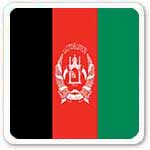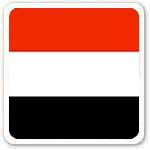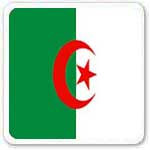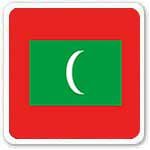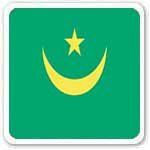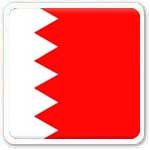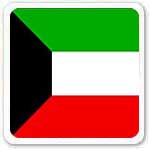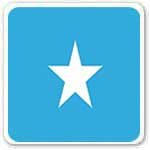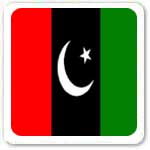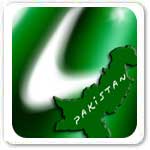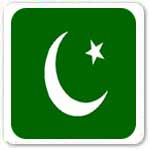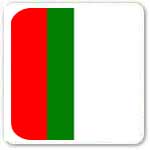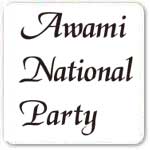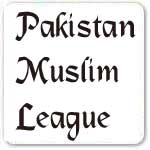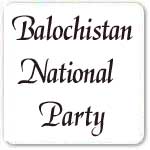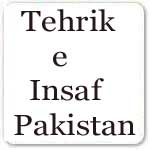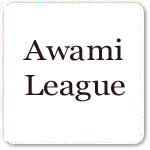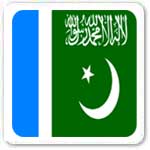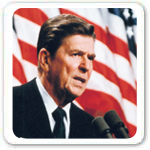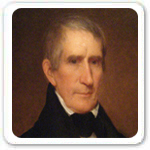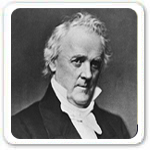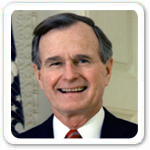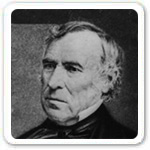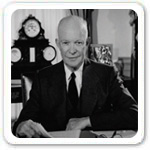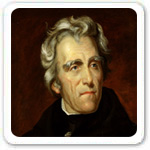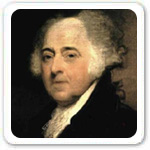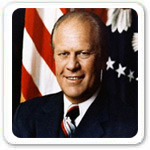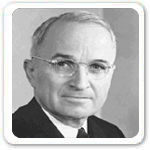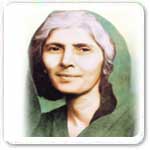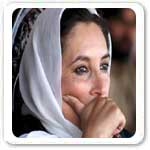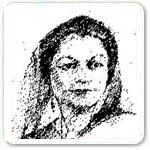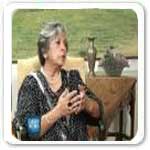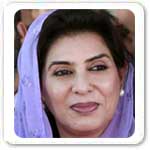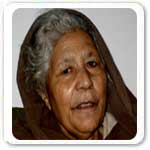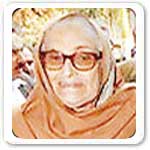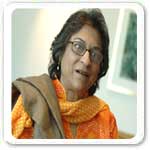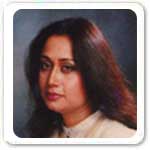Thursday, March 25, 2010
Top Ten Muslim Countries Having Highest Muslim Population By Proportion
Political Party Of Pakistan, Top Ten 10 Best Or Largest Parties
India Pakistan Relations History
 History of India and Pakistan Relation.
History of India and Pakistan Relation.Born out from the furnace of animosity, India and Pakistan, the twin brothers have a history of unique relations. There is much in common between Republic of India and Islamic Republic of Pakistan. The diplomatic relations developed soon after independence but these relations did not ensure good friendship. The blaming process started soon after the inception of Pakistan when during the world’s biggest mass migration both states were unable to provide security to minorities. At that time there were 680 princely states and their future was to be decided according to their own will. Junagadh and Kashmir are two of these states which are still a bone of contention between India and Pakistan. Junagadh was composed of 88% Hindu Majority with a Muslim ruler named Nawab Mahabat Khan. The ruler voted for Pakistan but India did not accept it on the plea of heavy Hindu majority. The other reason projected by India was that the state of Junagadh was encircled by Indian state and giving it to Pakistan would contradict the two nation theory. The stand of Pakistan was on the basis of the Muslim ruler and the maritime link of Pakistan with junagadh coastal line.
One the other hand, the ruler of Kashmir, Hair Singh, wanted to join India but the majority of Muslim population was in the favour of Pakistan. Maharaja Hair Singh made a “stand still agreement” with the Government of Pakistan. However, the rumoures spread in Pakistan that Mahraja Hari Singh was going to accede with India. The forces of Pakistan invaded in Kashmir in 1947 and Hari Singh asked India for help. Indian Armed forces violating the provision of their constitution entered into the jurisdiction of Kashmir. In 1957, Pakistan acquired Azad Kashmir and India captured state of Jammu and Kashmir. Both of these parts are being held by the same countries which occupied these states forcefully.
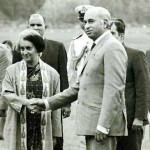 In 1965 India launched operation Meghdoot and captured 80% of Siachen Glacier. 1971 was a black year in the history of Pakistan as she lost its eastern wing as India intervened to favour Bengali people and seized the Qasim part. 90, 000 Pakistani soliders surrendered in Bangladesh. In July 1972 P.M India Gandhi and PM Zulfiqar Ali Bhutto met in Indian Hill station of Simla and signed an agreement to return 90, 000 Pak personnel, and that India would get its captured territory in the west. They also agreed that from then on, they would settle their disputes through peaceful bilateral negotiations. Eventually, the trade relation restarted in 1976 but the Afghan crisis of 1979 again disrupted the peaceful process started in 1976.
In 1965 India launched operation Meghdoot and captured 80% of Siachen Glacier. 1971 was a black year in the history of Pakistan as she lost its eastern wing as India intervened to favour Bengali people and seized the Qasim part. 90, 000 Pakistani soliders surrendered in Bangladesh. In July 1972 P.M India Gandhi and PM Zulfiqar Ali Bhutto met in Indian Hill station of Simla and signed an agreement to return 90, 000 Pak personnel, and that India would get its captured territory in the west. They also agreed that from then on, they would settle their disputes through peaceful bilateral negotiations. Eventually, the trade relation restarted in 1976 but the Afghan crisis of 1979 again disrupted the peaceful process started in 1976.
Pakistan supported Taliban and India favoured Soviet Union. India was also worried about US military aid to Pakistan, Pakistan’s purchase of arms from us and the advancement in her nuclear programme. The change in leadership brought a new era of relation between the two rivals. In Dec 1988 Benazir Bhutto Shaheed and Rajiv Gandhi resumed talks on different issues melding cultured exchange, civil aviation and not to attack each other nuclear facilities. At that time BB said.
“Burry the Hatchet; we have had enough of it. Let’s start a new chapter. India has a new generation leadership. Rajiv & I belong to a new generation. We have some kinship. He father was assassinated and so was my father. He lost his brother and so have I we both can start from clean state.”
In 1997, high level talks were resumed after 3 years. Prime Minister of India and Pakistan met twice and foreign secretaries conducted 3 rounds of talks in which they identified 8 outstanding issues to focuss. These 8 issues were
- Kashmir issue
- Water crisis
- Sir creek issue
- Rann of kutch
- MFN status
- Siachen issue
- State sponsored issue
- Nuclear Deterrence
In September 1997 the talks broke down on structural issue where as in May 1998 the situation became harder because of nuclear experiment conducted by Pakistan. The environment further became deplorable when Indian Air lines Flight IC 814 was hijacked in 24 Dec 1999. The plan landed in Lahore for refuelling but the final destination was Kandhar, Afghanistan. Rivalry increased when attack was conducted on Indian parliament on Dec 2001. India blamed Jash-e-Mohammad for that act. The Samjhota express carnage of 18th February 2007 added fuel to fire. The series of blaming each other started again where as Pakistan tried to project cordial relations.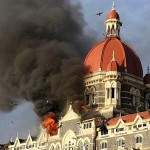 In Nov, 2008, a series of ten co-ordinated attacks were committed by terrorist which began across Mumbai which is the Indian financial capital and the largest city. The attack was started on 26 November 2008 and ended on 29 November 2008. In these attacks 173 people were killed including 35 foreigner where as 38 were wounded. India blamed Lashkar-e-Taiba and gave evidences that weapon, candy wrappers, telephone sets and branded milk Packets used by the terrorists belonged to Pakistan. But it was also found that the terrorist were drunk as the Lashkar-e-Taiba elements did not drink, and were speaking Hyderabadi language. Additionally, Hermant Kurkure was the first man to be murdered in that attack. He was the man who was on the hit list of Indian Dons because he arrested General Parohit, who was the master mind of Samjhota Carnage. Another reason was that Obama Discussed to solve Kashmir issue to bring stability in the South Asian region. This attack was done to divert his attention. The lok sbha election could not be ignored as the current government needed the Pakistan card to flame the sentiments of Indian masses.
In Nov, 2008, a series of ten co-ordinated attacks were committed by terrorist which began across Mumbai which is the Indian financial capital and the largest city. The attack was started on 26 November 2008 and ended on 29 November 2008. In these attacks 173 people were killed including 35 foreigner where as 38 were wounded. India blamed Lashkar-e-Taiba and gave evidences that weapon, candy wrappers, telephone sets and branded milk Packets used by the terrorists belonged to Pakistan. But it was also found that the terrorist were drunk as the Lashkar-e-Taiba elements did not drink, and were speaking Hyderabadi language. Additionally, Hermant Kurkure was the first man to be murdered in that attack. He was the man who was on the hit list of Indian Dons because he arrested General Parohit, who was the master mind of Samjhota Carnage. Another reason was that Obama Discussed to solve Kashmir issue to bring stability in the South Asian region. This attack was done to divert his attention. The lok sbha election could not be ignored as the current government needed the Pakistan card to flame the sentiments of Indian masses.
In spite of this deteriorated situation Pakistan did not give up to create friendly atmosphere. Currently, the government of India is not that much brutal. Recently Indian minister of state for external affairs said they were not worried about Pakistan purchasing of armaments but if these weapons will be used against India, they were ready to fight. In addition, Pakistan nukes were unsafe.
Bit recently the statement of Indian Army Chief Gen Deepak Kapoor regarding his army’s capacity to fight on two fronts, upset a lots of people in Pakistan. This also shows that there is a conflict of interest between Indian army and Indian Government.
India and Pakistan must work jointly to coeate a peaceful atmosphere. Sharing a long border with common geographic importance can increase to their worth if the joint venture is adopted
Oldest American Presidents: USA or United States Of America Top Ten 10
Pakistani Women: Best Political, Human Rights And Social Workers
Pakistan Education: Problems And Solutions Of Pakistan Education
 Education is considered as the cheapest defence of a nation. But the down trodden condition of education in Pakistan bears an ample testimony of the fact that it is unable to defend its own sector. Though 62 years have been passed and 23 policies and action plans have been introduced yet the educational sector is waiting for an arrival of a saviour. The government of Pervaiz Musharraf invested heavily in education sector and that era saw a visible positive educational change in Pakistani society. Now a days, the economic situation in Pakistan is under stress and education is the worse effected sector in Pakistan. The Constitution of Islamic Republic of Pakistan says,
Education is considered as the cheapest defence of a nation. But the down trodden condition of education in Pakistan bears an ample testimony of the fact that it is unable to defend its own sector. Though 62 years have been passed and 23 policies and action plans have been introduced yet the educational sector is waiting for an arrival of a saviour. The government of Pervaiz Musharraf invested heavily in education sector and that era saw a visible positive educational change in Pakistani society. Now a days, the economic situation in Pakistan is under stress and education is the worse effected sector in Pakistan. The Constitution of Islamic Republic of Pakistan says, “The state of Pakistan shall remove illiteracy and provide free and compulsory secondary education within minimum possible period.”
In Human development Report Pakistan is placed at 136th position for having just 49.9% educated populace. The primary completion rate in Pakistan, given by Date Center of UNESCO, is 33.8% in females and 47.18% in males, which shows that people in the 6th largest country of the world are unable to get the basic education. There are many basic issues which are responsible for this problem in Pakistan. Firstly, the educational system of Pakistan is based on unequal lines. Medium of education is different in both, public and private sector. This create a sort of disparity among people, dividing them into two segments. Secondly, regional disparity is also a major cause. The schools in Balochistan(The Largest Provice Of Pakistan By Area) are not that much groomed as that of Punjab (The Largest Provice Of Pakistan By Population). In FATA, the literacy rate is deplorable constituting 29.5% in males a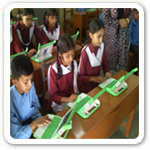 nd 3% in females. Thirdly, the ratio of gender discrimination is a cause which is projecting the primary school ratio of boys & girls which is 10:4 respectively. For the last few years there has been an increase in the growth of private schools. That not only harms the quality of education but create a gap among haves and have nots. Fourthly, the lack of technical education is a biggest flaw in the educational policy that has never been focused before. Therefore, less technical people means less . Fifthly, the allocation of funds for education are very low. It is only 1.5 to 2.0 percent of the total GDP. It should be around 7% of the total GDP. Sixthly, the teachers in government schools are not well trained. People who donot get job in any other sector, they try their luck in educational system. They are not professionally trained teachers so they are unable to train a nation. Finally, Poverty is also another factor that restrict the parents to send their children to public or private schools. So, they prefer to send their children to madressahs where education is totally free.
nd 3% in females. Thirdly, the ratio of gender discrimination is a cause which is projecting the primary school ratio of boys & girls which is 10:4 respectively. For the last few years there has been an increase in the growth of private schools. That not only harms the quality of education but create a gap among haves and have nots. Fourthly, the lack of technical education is a biggest flaw in the educational policy that has never been focused before. Therefore, less technical people means less . Fifthly, the allocation of funds for education are very low. It is only 1.5 to 2.0 percent of the total GDP. It should be around 7% of the total GDP. Sixthly, the teachers in government schools are not well trained. People who donot get job in any other sector, they try their luck in educational system. They are not professionally trained teachers so they are unable to train a nation. Finally, Poverty is also another factor that restrict the parents to send their children to public or private schools. So, they prefer to send their children to madressahs where education is totally free.
Recently, minister of education announced a new Education policy for that next 10 years. The interesting thing is that the previous educational policy from 1998 to 2010 is still not expired. Although it is projected to give new plans and to make more promises with the nation. It is said in this policy that all the public schools will be raised upto the level of private schools. No plan of action have been discussed, yet a notice is issued to private schools to induct government course in 5th and 8th class and these classes will bound to take board exams. This disturbed the students of private sector also.
Solutions for Educational System: Estimating the value of education, the Government should take solid steps on this issue. Implementation instead of projecting policies, should be focused on. Allocation of funds should be made easy from provinces to districts and then to educational institutes. Workshops must be arranged for teachers. Foreign states are using LSS system. This should be inducted in Pakistani schools to improve the hidden qualities of children.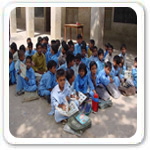 Technical education must be given to all the classes. The education board of Punjab have projected a plan to give tech- education to the children of industrial workers. Promotion of the primary education is the need of time. Teachers, professors and educationists should be consulted while devising any plan, syllabus or policy. The state seems to give up her responsibility and totally relying on private sector. The need of time is to bring education in its original form to masses. Burdening a students with so much books will not work as he will not understand what the world is going to do next moment. Education is the only cure of the destability in the state and can bring revolution through evolution, by eradicating the social evils.
Technical education must be given to all the classes. The education board of Punjab have projected a plan to give tech- education to the children of industrial workers. Promotion of the primary education is the need of time. Teachers, professors and educationists should be consulted while devising any plan, syllabus or policy. The state seems to give up her responsibility and totally relying on private sector. The need of time is to bring education in its original form to masses. Burdening a students with so much books will not work as he will not understand what the world is going to do next moment. Education is the only cure of the destability in the state and can bring revolution through evolution, by eradicating the social evils.
Health Care in Pakistan: Problems Or Issues With Solutions
 Health care in Pakistan
Health care in PakistanPakistan is the 6th largest state of the world having a huge flux of population living in rural and urban areas. The Federal Government of Pakistan after taking her due share from NFC award promise to fulfil the four major objectives i.e security, education, health and sanitation. Unfortunately, only 1.5% of entire budget is allocated to health and sanitation which is insufficient. Secondly, the sanitary condition are deplorable and the stagnant water absorb 150 feet in the soil mixing up with clean water, which is spreading severe diseases. Owing to this poor sanitary condition W.H.O projected the idea of oral polio vaccination.
Additionally, the number of doctors is less to tackle the problems of health. In Punjab only 1400 doctors qualify every year where as statistics show that every year 70, 000 babies born in Punjab.
The infrastructure is undeveloped. The basic health units in rural areas are not equipped enough to better the falling health of rural populace. If there are well equipped hospitals, the availability of doctors is not ensured. Glaringly, the quaks are performing in every nook and corner of the country without any fear of accountability. The medicine companies are indulge in minting money with the help of dishonest doctor, consequently killing many people. Less attention is given to sterilize the tools and transfer of blood without disease. Because of the religious myths and cultural barriers less attention is given to female health which results in the increment of MMR and TMR.
Apart from medical sector, the industrial sector is also adding fuel to the fire. They don’t have any proper way of wasting the waste material of their industrial units. They are increasing the pollution without any single thought of health hazards. No measures have been taken to eradicate the problems of pollution or to deal with such industries.
Agriculture sectors is also indulge in the same practices unaware of the gloomy side of fertilizers and pesticides, which are being used by the uneducated farmers. This causes an alarming situation of skin problems in rural areas together with disturbing the eco-system. Lack of re-creation facilities let them to have only conjonal re-creation that results in surging the population, which is not taken proper care because of low income.
Focussing on the golden rule of “Health is wealth”, the government of Pakistan should take appropriate measures for the betterment of health facilities in Pakistan. There should be strong policies with accurate implementation. The awareness programmes should be managed to let the people know about the problems and remedies. Their should be a strong determination for cleaning the surroundings of the rural as well as urban populace. From domestic to international level, a healthy society can fight against the evils of society and let the people free from the cluthes of ignorance.

